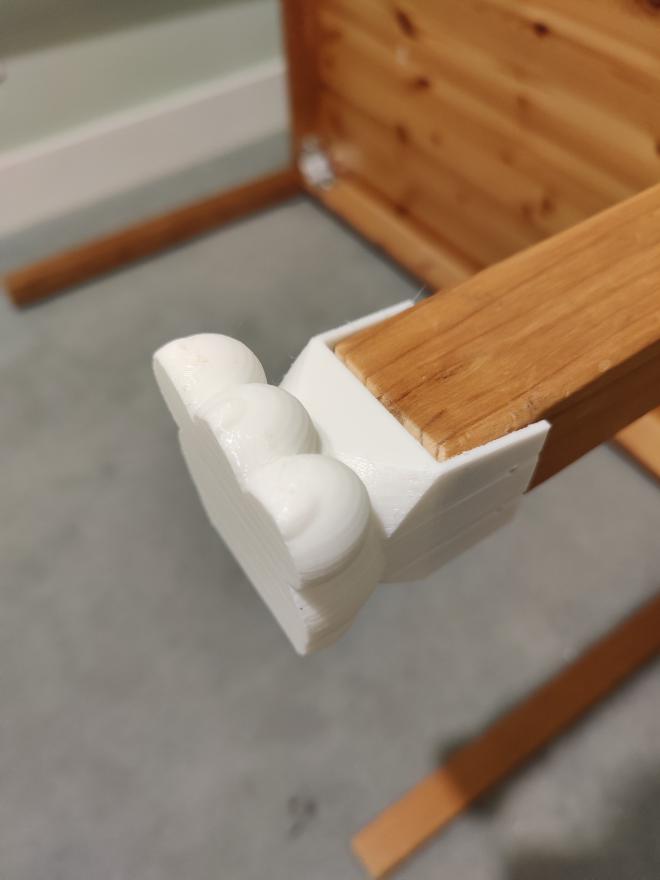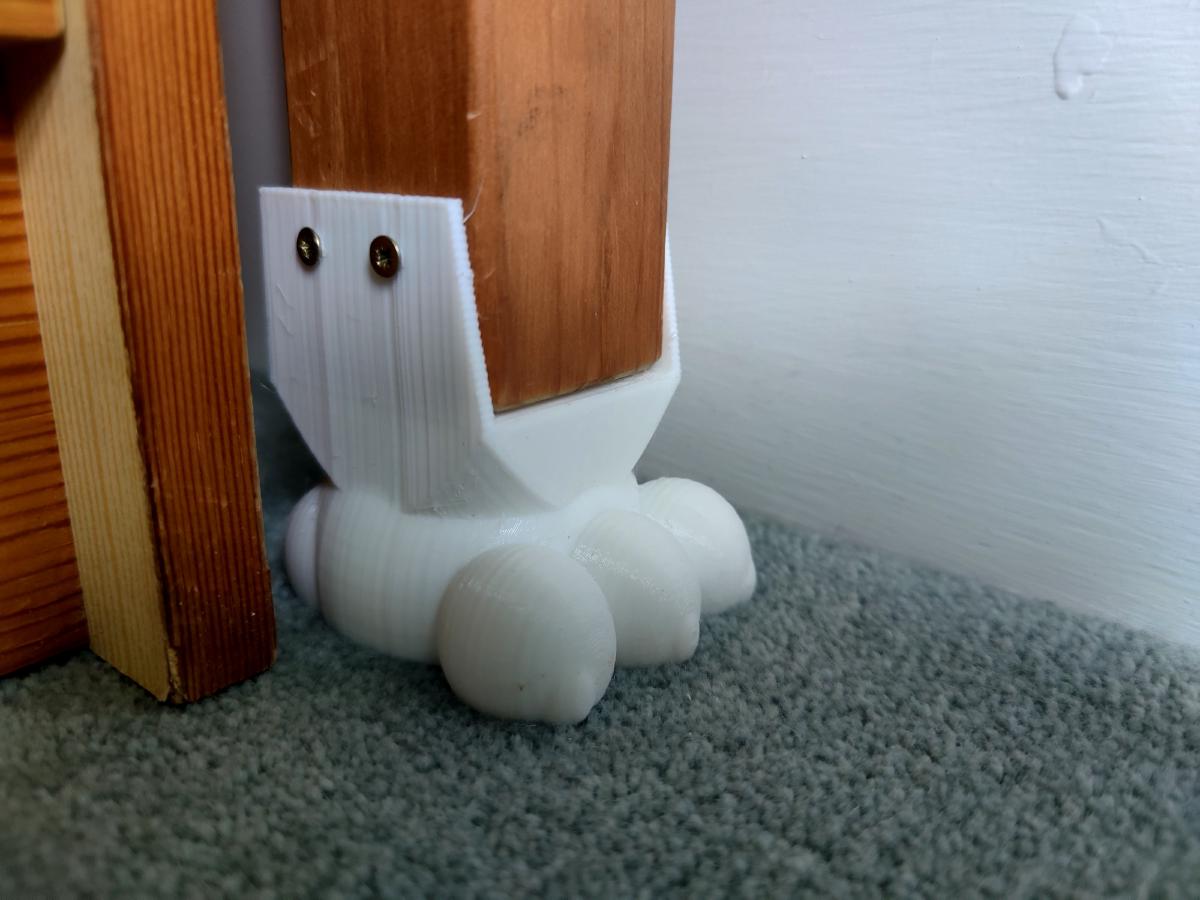We’ve been getting a room in our house ready to work as a nursery. Having a child is universally an expensive experience, and so like a lot of other soon-to-be-parents we’re using second hand kit where we can and we were lucky enough to have an old table lying around (it used to be my wife’s desk before we moved her work space to a different room) and a small chest of drawers (ideal for lots of small clothes) donated from our friends who don’t need it any more.
The problem is that the drawers are ~25mm too tall. They fit under the table, but the skirt of the table inteferes with the top row of drawers making them unusable.
This means either:
- we need to not put the drawers under the table.
- …or the table needs to be taller.
Given how close the table height is to perfect, I wanted to explore options for how to raise the table. Initially I was thinking this would be another wooden table project, but I kept coming back to how wooden table legs are so boring, and a child’s room should be fun.
Table Leg Exploration#
I thought I’d use this as an opportunity to explore using ChatGPT to do 3D design, or at least to help in the exploration.
The first phase of that went really rather well. After explaining the context the model helped narrow down to options based on how fun they were and how practical to print, and then it offered to generate some 3D concepts. I asked it to generate concepts for a paw, a hoof and a claw. There was a little feedback on each, but within 3-4 iterations we got to something quite convincing.
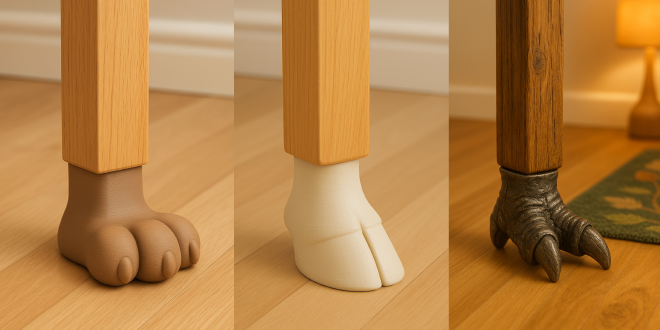
So far so good!
ChatGPT tries OpenSCAD#
Given how much I’ve been using AI Code-gen recently in my professional work, I was eager to see how the flagship models of 2025 handled 3D design in OpenSCAD. I’m a big fan of the tool for designing functional parts because it makes it very easy to have correct dimensions and to modify the design later if I need to adjust the fit (e.g. the tolerances on the table leg). Given it’s just code I was hopeful that the AI would be able to come up with something reasonable on the first pass. I’ll let you judge it’s success…
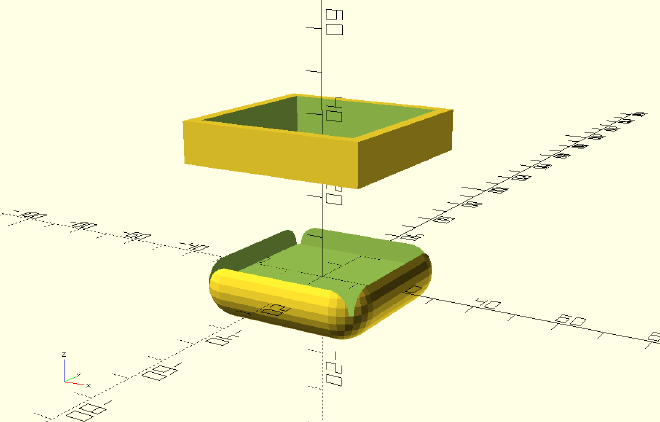
After the minor fail of the first pass, I tried several iterations of feedback, including sending screenshots of the render back to the AI to get it to refine the design. All in all with very mixed success. One of the iterations seemed to be getting roughly there, although at this stage I was realising that I was going to need to hand code this to get anything even partly usable.
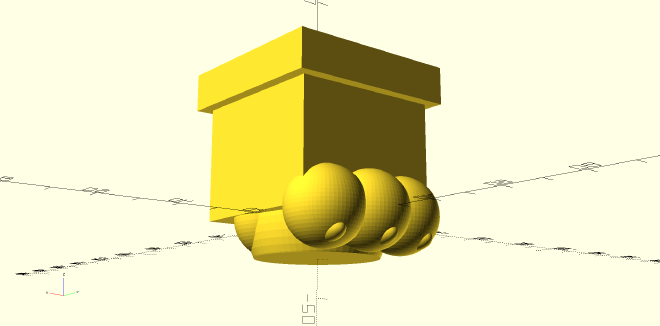
Hand coding the rest#
With my hopes of free and easy AI-enabled 3D design dashed on the rocks, I reverted back to hand coding the result based on the bones of the design started by the AI. Somewhat foolishly I also went directly to printing the first draft without any partial prints to check dimensions. Thankfully I was pretty much bang on with my ruler measurements in advance and the prints fitted perfectly first time (even a little snugly which was extremely helpful during assembly).
And that’s it, functional and fun table feet extensions for a nursery. You can
find the designs and download both .stl and .scad files on
Thingiverse
. Please feel free to remix
or build on the same designs, I’d love to see the results back on Thingiverse!
